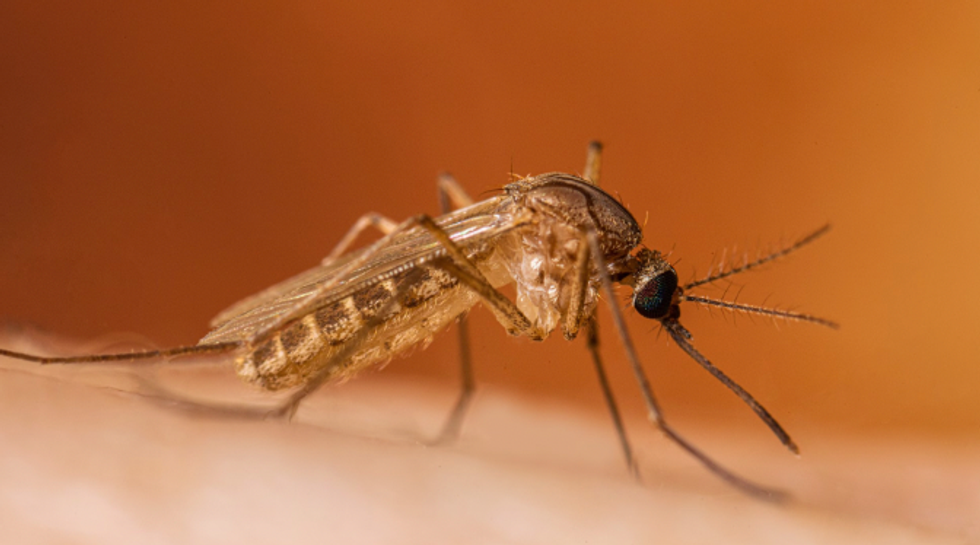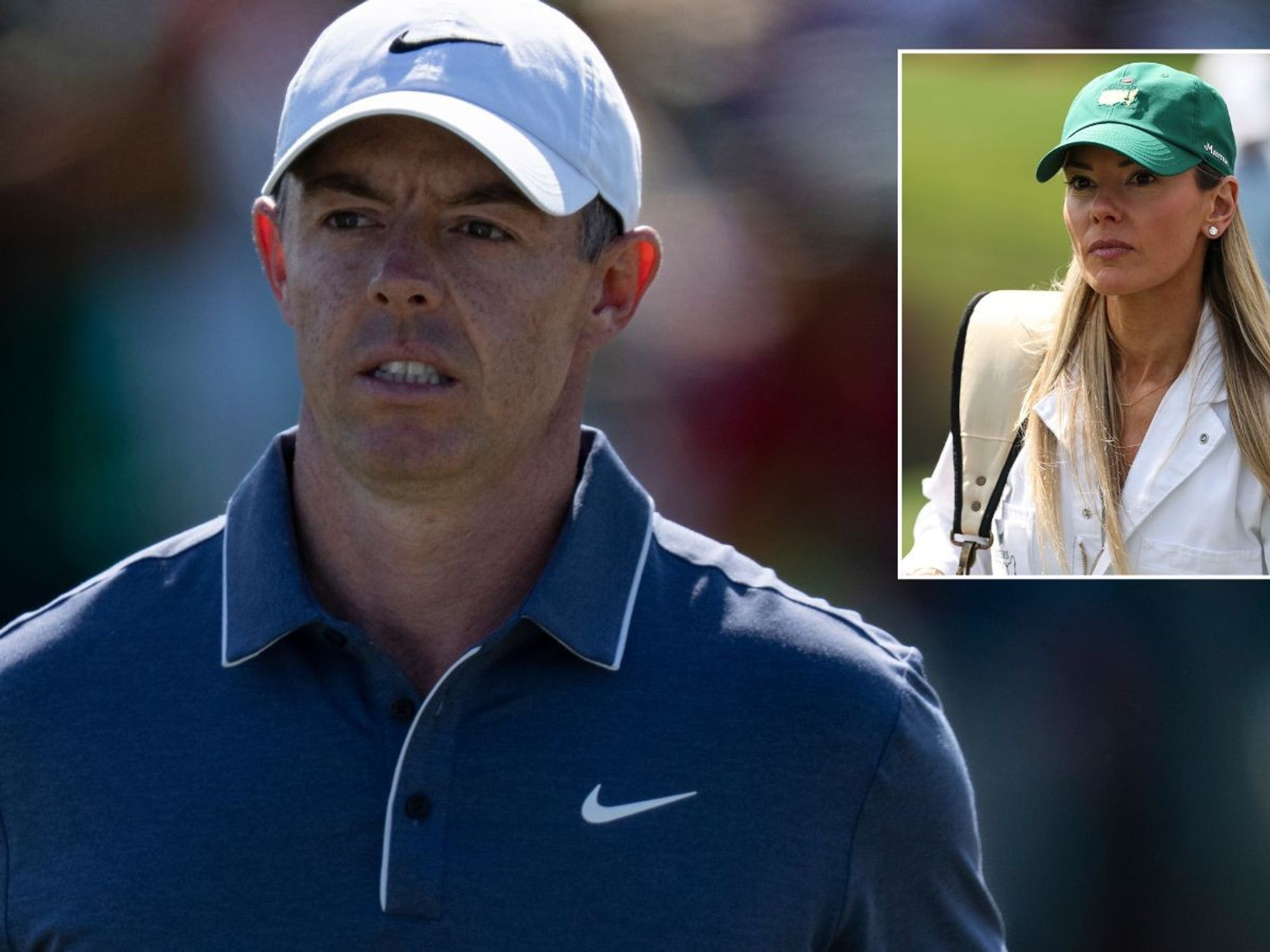West Nile virus should reach the UK "any day now", an infectious disease expert warns
Don't Miss
Most Read
Trending on GB News
Scientists are sounding the alarm over a deadly mosquito-borne virus spreading across Europe.
West Nile virus (WNV) - as the name suggests - originates from Africa. The first human case was discovered in 1937 in the West Nile district of Uganda.
The virus belongs to the Orthoflavivirus family which includes dengue, Zika and Japanese Encephalitis.
In the 1950s WNV started circulating in Europe, with the first confirmed outbreak in humans occurring in 1962–1963 in Camargue, a coastal region in southern France.
Sporadic cases have shown up in France and Hungary in the decades since.
In 1996, the first major WNV infection epidemic occurred in Europe, with 393 human cases detected in Romania.
Three years later it spread like wildfire across the US, starting in New York before reaching the West Coast two years later.
"That was a really dramatic event and now West Nile is endemic in North America," explained Professor Matthew Bayliss, Oxenhale Chair of Veterinary Epidemiology at the University of Liverpool, who tells GB News that WNV was a "largely ignored disease" up until that point.
The total number of deaths recorded from West Nile virus in the US between 1999 and last year was 2,958. Five deaths have been recorded during this mosquito season.
The virus is now ramping up in Europe too, with Spanish officials racing to contain a deadly outbreak.
As of August 28, 2024, five people have died from WNV in the Andalusia region.
Twelve people in Greece have also died from WNV since the beginning of the year until August 21.
As of August 28, 2024, 11 other European countries have reported human cases of WNV: Albania, Austria, Bulgaria, Croatia, France, Germany, Hungary, Italy, Kosovo, Romania and Serbia.

In 1999, WNV spread like wildfire across the US
Getty Images
Given that many of these countries are a "short hop away" from the UK, it's surprising no cases have been confirmed here, Professor Bayliss says, adding that he expects this to change "any day now".
This is worrying because WNV can be deadly. About 80 per cent of cases are asymptomatic or mild, producing symptoms such as fever and headaches usually two to 14 days after a mosquito bite.
That leaves 20 per cent who develop serious disease.
In about one per cent of cases, the virus gets into the brain and causes encephalitis - brain swelling due to inflammation. This can be life-threatening.
As there is no approved vaccine for WNV in humans, this poses a serious public health risk.
According to Doctor Krishanthi Subramaniam, an immunologist at the University of Liverpool, the situation in Europe is "not so alarming" as case rates are similar to last year with an increase noted only in a few countries.
"However, this illustrates that these diseases are not confined to the tropics and more investment into vaccines is needed given there are no licensed vaccines for West Nile," he told GB News.
What's driving this spread?
Last month European Centre for Disease Prevention and Control (ECDC) director Andrea Ammon said: "Europe is already seeing how climate change is creating more favourable conditions for invasive mosquitoes to spread into previously unaffected areas and infect more people with diseases such as dengue."
According to Messrs Bayliss and Subramaniam, the same can be said for WNV.
Prof Bayliss concedes that there's too much noise in the data to directly attribute the spread to climate change, noting that WNV is already endemic in Europe and birds can bring it from Africa in their migrations.
However, researchers fear that a warming planet may expand, contract, or shift the geographical ranges of mosquito species.
For example, warmer temperatures may cause ranges to expand or shift toward the poles, while areas around the equator may become too hot for mosquitoes to live. These shifts could expose new communities to mosquito-borne disease.
Recent research carried out by a team of scientists at Los Alamos National Laboratory supports this hypothesis.
Scientists used computer models to simulate how climate change could expand the geographical range in which mosquitoes live across North and South America.
Of the nine mosquito species Gorris and the team modelled in the study, published in the Journal of Climate Change and Health, six are projected to expand in geographical range, two are projected to shift in geographical range, and one is projected to remain nearly the same.
For some species, the areas currently suitable for survival are projected to become even more suitable in the future, worsening the spread of mosquito-borne viruses.
Aedes and Culex mosquitoes, both of which transmit West Nile virus, are projected to expand their geographical range and "respond resiliently to climate change under both the high and moderate climate warming scenario", the researchers warned.
In a separate study, published in Nature Communications, scientists used climate change modelling to investigate the extent to which WNV expansion in Europe can be attributed to climate change while accounting for other direct human influences such as land-use and human population changes.
The modelling demonstrates a "notable increase" in the area ecologically suitable for WNV circulation during the period 1901–2019, whereas this area remained largely unchanged in a no-climate-change environment, the researchers found.
They concluded that a drastic increase in the human population at risk of exposure is partly due to historical changes in population density, but climate change has also been a "critical driver" behind the heightened risk of WNV circulation in Europe.
LATEST HEALTH DEVELOPMENTS
 Countries are scaling up stockpiles of vaccines and developing new ones in a bid to contain the outbreak Getty Images
Countries are scaling up stockpiles of vaccines and developing new ones in a bid to contain the outbreak Getty Images Climate change is thought to increase the spread of mosquitoes and mosquito-borne diseases in several ways.
One way is warmer temperatures, which make previously inhospitable areas more suitable for mosquitoes to breed, allowing them to expand their habitats into higher altitudes and cooler climates
As the planet warms, the mosquito season is also getting longer along with the lifespan of mosquitos.
Warmer temperatures allow mosquitoes to travel further and can reduce the incubation period of viruses inside mosquitoes, which could increase rate of transmission.
In dry climates, heavy rainfall can provide good breeding conditions for the mosquitoes.
Increased humidity, droughts may turn rivers into strings of pools, the preferred breeding sites of mosquitos.
Buckle up
According to Prof Bayliss, there are few good options left to halt the spread of WNV in Europe.
"We already have mosquitoes on the continent and we're not going to stop them coming in," he said, adding that mosquitoes transmit the virus to birds and we cannot control this either.For Messirs Bayliss and Subramaniam, a vaccine would offer the best defence, although there's no candidate even close to getting licensed.
There are WNV vaccines for horses but several challenges have hindered candidates from progressing beyond phase 1 or 2 human clinical trials.
Challenges include designing and implementing efficacy studies, potential vaccine safety concerns, prohibitive costs of WNV vaccine programmes, and lack of substantial commercial interest.
In the absence of vaccines, the Centers for Disease Control and Prevention (CDC) advocates community-level mosquito control programmes to reduce vector densities, personal protective measures to decrease exposure to infected mosquitoes, and screening of blood and organ donors.
Therapeutics are urgently needed too, says Doctor Subramaniam.
Several products have been studied in controlled clinical trials, but the trials were often underpowered and the products showed no benefit.
Patients have been treated with products such as immune globulin, interferon, and corticosteroids. However, none of the therapies has been demonstrated to improve outcomes.
Antibody therapy has shown the most promising results in animal models.
However, the efficacy of antibody therapy in animal models may not translate directly to humans.
Where does this leave the UK?
For prof Bayliss, it's not a case of if but when WNV starts spreading on our shores.
"Some people will fall sick but I think at this stage it will be pretty small scale," he told your correspondent.
He's banking on it producing a mild disease in most people and many will be asymptomatic.
Britain could be in a very different place 20 or 30 years down the line if we don't get a grip on climate change, he warns.
In the absence of effective vaccines, clear public health messaging about protective measures is critical, the prof adds.
These include:
- Use insect repellent: Apply EPA-registered insect repellent to exposed skin, but avoid the eyes and mouth
- Wear protective clothing: Wear long-sleeved shirts, pants, socks, and a hat
- Light-coloured clothing is less attractive to mosquitoes
- Use mosquito nets: Use mosquito nets over strollers and baby carriers, and sleep in screened or air-conditioned rooms
- Avoid standing water: Get rid of standing water around your home, such as from buckets, planters, or birdbaths
- Stay indoors: Stay indoors between dusk and dawn, when mosquitoes are most active
- Repair screens: Repair holes in window and door screens to keep mosquitoes out
- Avoid swamps and ponds: Avoid areas where mosquitoes commonly breed, such as swamps and ponds









